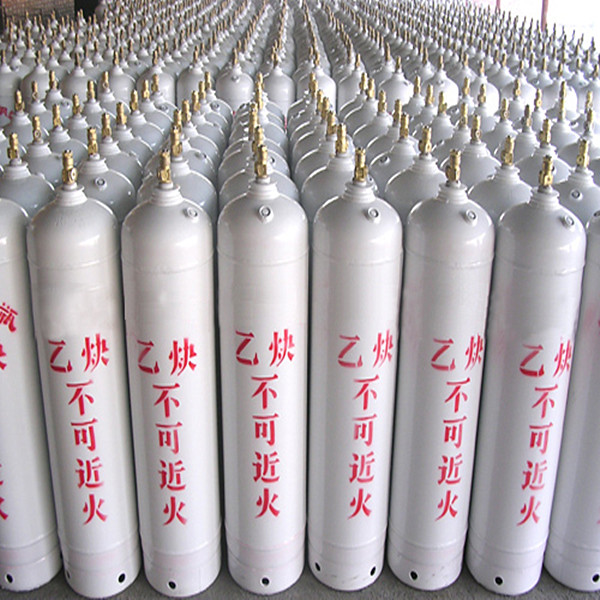b

Thank You!
Your requirement has been sent, we will contact you quickly!
Sent Failed!
Try again!
Chemical formula: C2H2
CAS login No.: 74-86-2
Appearance: colorless gas
Molecular weight: 26.04
Purity: ≥ 99.9%
Package: 40L
Gas content: 2-3kg
Name | Purity | Cylinder volume | Filling capacity | pressure | Valve model |
acetylene | 99.90% | 40L | 2-3kg | / | Carbon steel ryf-1 |

Gas description
Acetylene, with the molecular formula C2H2, commonly known as wind coal and calcium carbide gas, is the smallest member of the alkyne compound series. It is mainly used for industrial purposes, especially for metal welding. Acetylene is a colorless and highly flammable gas at room temperature. Pure acetylene is odorless, but industrial acetylene has a smell of garlic because it contains impurities such as hydrogen sulfide and phosphine.
Main purpose
Acetylene can be used for lighting, welding and cutting off metals (oxyacetylene flame). It is also the basic raw material for manufacturing acetaldehyde, acetic acid, benzene, synthetic rubber, synthetic fiber, etc.
Acetylene can produce high temperature when burning, and the temperature of oxyacetylene flame can reach about 3200 ℃. It is used for cutting and welding metals. Supply an appropriate amount of air, which can be completely burned to emit bright white light. It can be used as a lighting source in places where electric lamps are not popular or there is no electricity. Acetylene is chemically active and can react with many reagents. Before the 1960s, acetylene was the most important raw material for organic synthesis, and it is still one of the important raw materials. If it is added with hydrogen chloride, hydrocyanic acid and acetic acid, it can produce raw materials for polymer production.
Acetylene can polymerize differently under different conditions to produce vinyl acetylene or divinylacetylene respectively. The former can be added with hydrogen chloride to produce 2-chloro-1,3-butadiene, a raw material for neoprene production. At 400 ~ 500 ℃, acetylene can undergo cyclic trimerization to form benzene; Using nickel cyanide Ni (CN) 2 as catalyst, cyclooctylene can be formed at 50 ℃ and 1.2 ~ 2MPa.
Acetylene black can be prepared by decomposing acetylene into carbon and hydrogen at high temperature. Under certain conditions, acetylene polymerizes into benzene, toluene, xylene, naphthalene, anthracene, styrene, indene and other aromatic hydrocarbons. Through substitution reaction and addition reaction, a series of valuable products can be produced. For example, ACETYLENE DIMERIZATION generates vinyl acetylene, which then reacts with hydrogen chloride to obtain chloroprene; Direct hydration of acetylene to acetaldehyde; Acetylene reacts with hydrogen chloride to produce vinyl chloride; Acetylene reacts with acetic acid to produce vinyl acetate; Acetylene reacts with hydrogen cyanide to produce acrylonitrile; Acetylene reacts with ammonia to produce methyl pyridine and 2-methyl-5-ethyl pyridine; Acetylene reacts with toluene to produce dimethylethylene, and further catalyst cracking produces three isomers of methylstyrene: Acetylene condenses with one molecule of formaldehyde to propargyl alcohol, and with two molecules of formaldehyde to butynediol; The addition reaction of acetylene and acetone can produce methyl alkynol, and then produce isoprene; Acetylene reacts with carbon monoxide and other compounds (such as water, alcohol, mercaptan) to produce acrylic acid and its derivatives.

